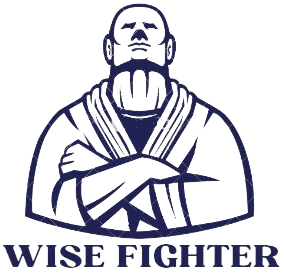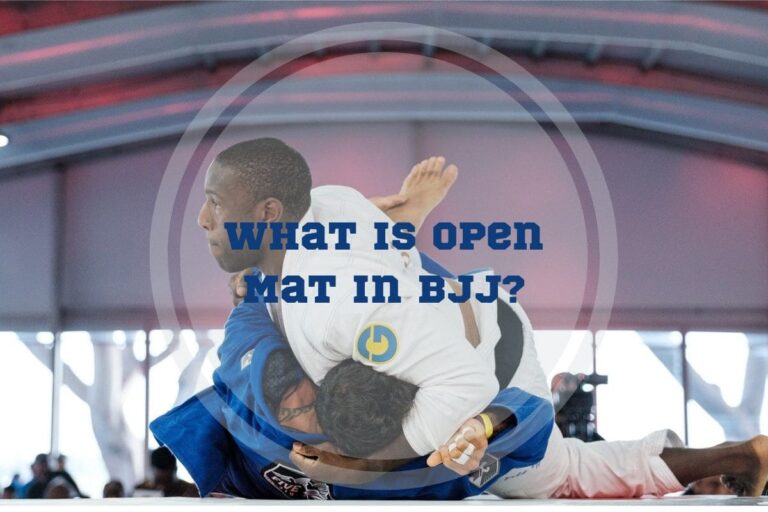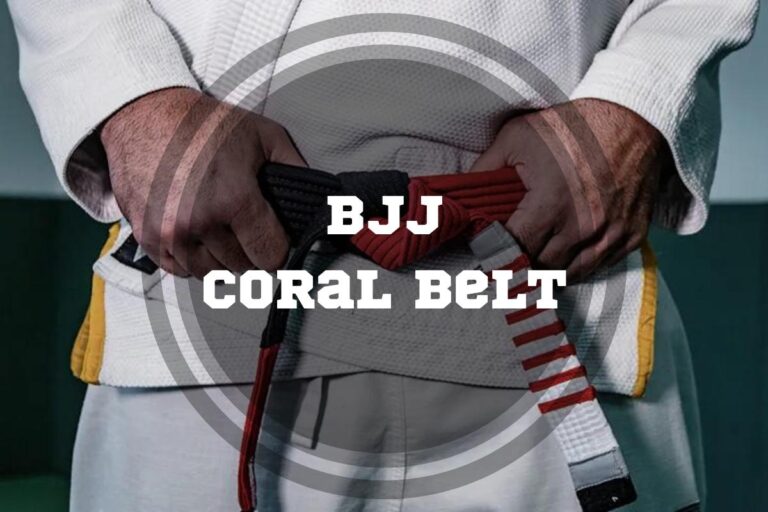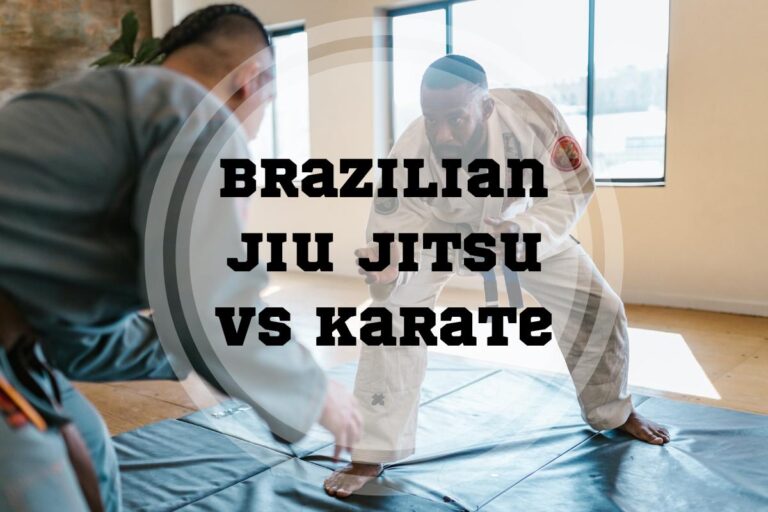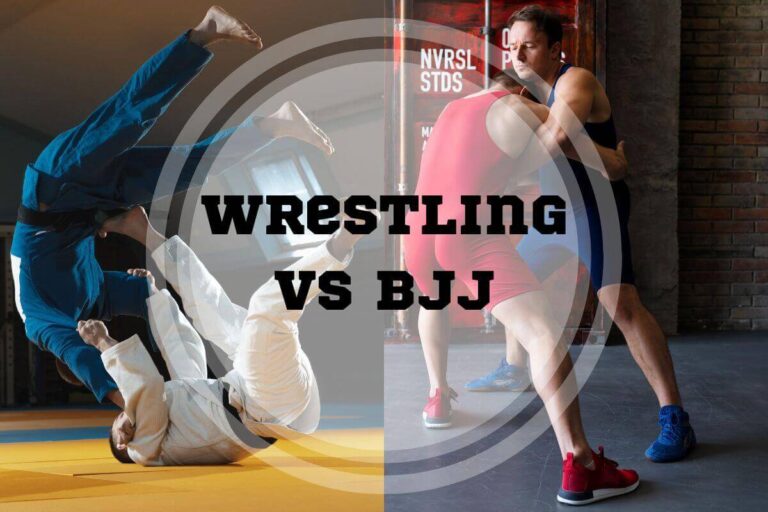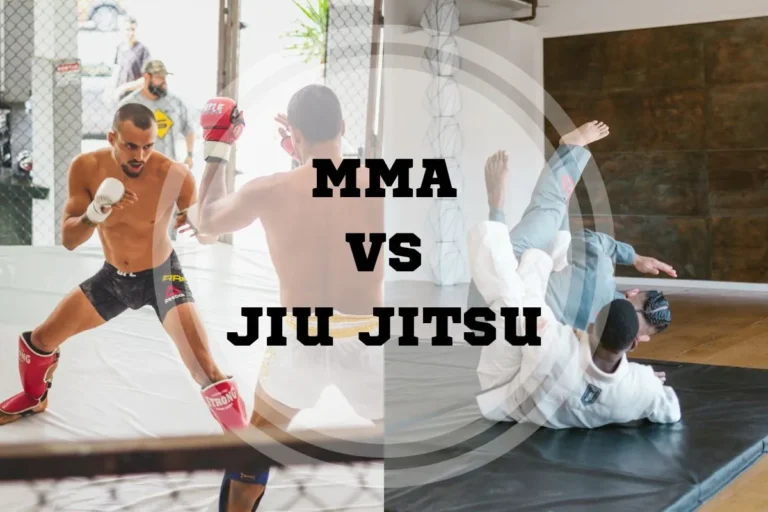Mat Burn in Brazilian Jiu Jitsu (BJJ): Prevention and Treatment
In Brazilian Jiu-Jitsu (BJJ), chances are you’re acquainted with the term “mat burn” — a painful red mark from sliding on training mats. Although it might seem insignificant, it’s uncomfortable and risky if mishandled. BJJ mat burn is essentially a type of friction-induced abrasion, exposing skin to harmful germs, causing infections like staph, ringworm, and impetigo, ultimately jeopardizing both your well-being and your training progress. This blog post will discuss BJJ mat burns and why it is crucial to learn how to effectively prevent and treat them.
What Causes BJJ Mat Burns and How to Prevent and Treat Them Effectively?
BJJ mat burns are caused from forceful friction between the skin and the mat, resulting in painful first-degree burns. Their prevention involves wearing appropriate attire, using clean mats, moisturizing, and minimizing sliding. Swift treatment includes cleaning, cooling, applying ointment, and bandaging the burn for faster healing and protection against infections.
What Is a Mat Burn?
Mat burn refers to a common occurrence in sports where friction between the skin and training mat leads to irritation or abrasions. Sometimes referred to as mat rash, this skin irritation can be uncomfortable and painful.
Mat burn commonly occurs in sports that involve close contact with mats, such as wrestling and BJJ. Various types of surfaces in Jiu-Jitsu mats, whether smooth or textured, can cause BJJ mat burns. Such injuries typically affect the outermost skin layer (epidermis), and in severe instances, can extend to the middle layer (dermis) or deeper. Any body part touching the mat is susceptible to burn, especially in a No-Gi training.
What Does BJJ Mat Burn Look Like and Why Is It Dangerous?
BJJ mat burn typically presents as a reddish or brownish patch of skin, possibly swollen, blistered, or raw. Its circular or oval shape often mimics the mat’s texture. Severity of the burn varies based on friction force, duration, and personal skin attributes. These burns sometimes are not merely uncomfortable but also dangerous, as they open a path for infections. Bacteria can easily enter your body through these wounds, causing skin infections like cellulitis or impetigo if hygiene is lacking.
Common Body Areas That Receive BJJ Mat Burns
BJJ mat burn can emerge on several body parts touching the mat, yet certain areas are more vulnerable. Knees, elbows, forearms, and sometimes faces are common targets due to continuous mat contact. These areas experience significant skin friction in a BJJ training, especially without the Gi attire and BJJ foot wrap. The friction and pressure result in painful burns.
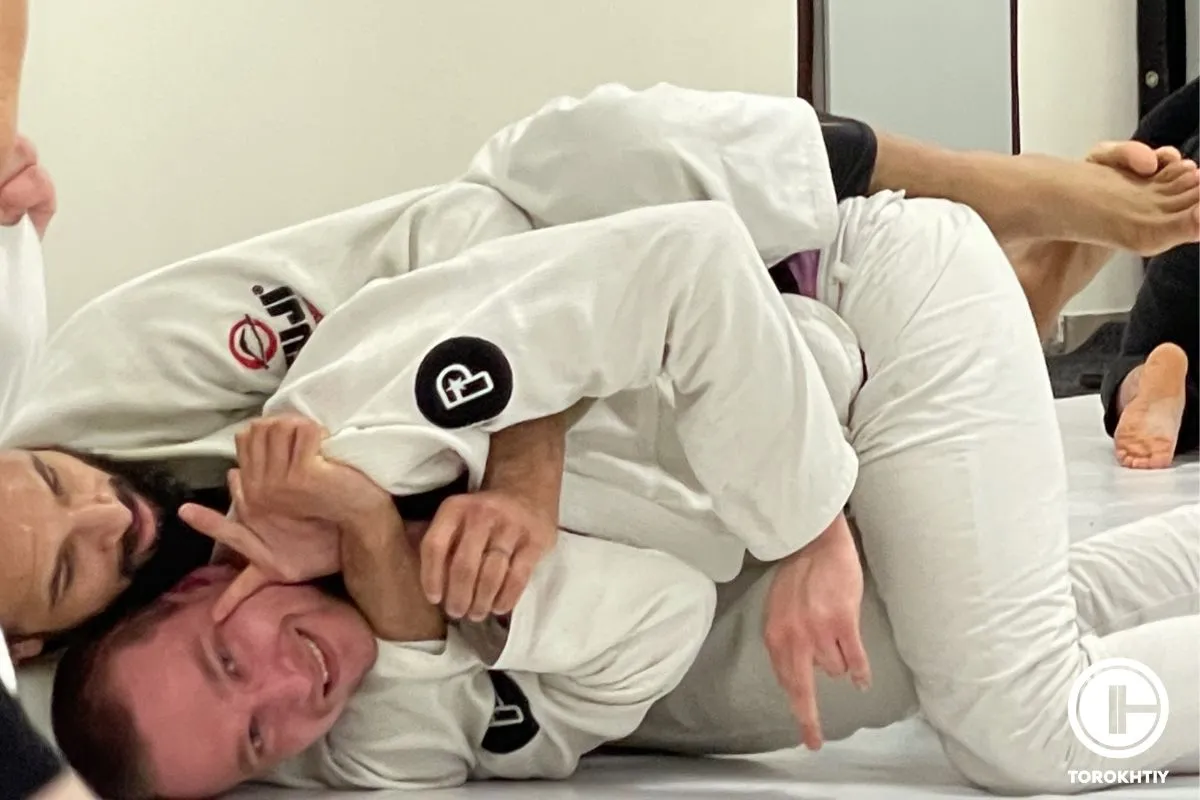
1. Face
Rigorous grappling often causes contact with mats, leading to facial mat burns.
2. Feet
BJJ mat burn on feet emerges from consistent foot pressure in grappling, causing redness, swelling, heat, and potential blisters. Constant mat contacts make your feet prone to burns.
3. Knees
BJJ mat burn on knees arises from friction, causing inflammation and potential cartilage tears. It’s frequent among BJJ newcomers not used to wearing protective equipment.
4. Elbows
The elbows and arms are other common burn spots. Grounded athletes under pressure can experience skin compression, resulting in pain and inflammation. Usually, it happens when the fighter lies on one elbow, leading to friction against the mat.
Causes of BJJ Mat Burns
BJJ mat burn occurs when an athlete’s skin experiences compression or mat friction while on the ground and is worsened by improper techniques. Causes of burns include being rolled over, insufficient mat padding, inadequate rotation in training, and wearing overly tight or heavy clothing.
1. Improper Technique Execution
While executing specific moves or transitions, like arm bars straining wrists and elbows, friction against the mat can cause irritation, abrasions, and, eventually, mat burns. One must prioritize maintaining correct form and body control to reduce unnecessary rubbing across the surface.
2. Inadequate Training Mats Padding
Inadequate mat padding heightens friction, raising the risk of BJJ mat burn during intense grappling. Opt for high-quality and well-padded mats at your training facility to reduce the chances of inflicting mat burns during training sessions.
3. Improper Protective Clothing
Protective attire is vital to prevent BJJ mat burns. Rash guards or durable BJJ spats add an extra layer of defense against mat burns and abrasions. Proper attire and hygiene practices can also help prevent gi burn among BJJ practitioners.
How to Treat BJJ Mat Burns?
Most burns are treatable at home. However, serious cases require immediate attention, as they can cause significant pain and potential long-term issues. To mitigate pain and treat the BJJ mat burns, take the following steps.
1. Clean BJJ Mat Burn
BJJ mat burns usually manifest as red irritated skin that might blister and heal in layers. The heat from a hot surface can even lead to second – or third-degree friction burns. Before applying any cream, ensure to clean the area to remove dust or debris.
2. Use Burn Cream
Available over the counter, burn cream or ointment treat minor burns by alleviating pain, reducing swelling, and aiding healing when applied as needed.
3. Cover With Sterile Gauze
Sterile gauze pads are proven useful for burn treatment. They’re individually packaged to prevent contamination and effectively shield the swollen area from harmful particles and bacteria. While they are effective for wound care, use them only when not engaged in excessive movement or training.
4. Cover the Wound With BJJ Tape
BJJ tape acts as a bandage, preventing infection or irritation by keeping everything in place. You can cut the desired size and apply it evenly over the wound, ensuring the adhesive is spread evenly to avoid discomfort.
The Main Mistakes in the Treatment of BJJ Mat Burns
This section will explore common errors in treating BJJ mat burn and how to avoid them. Consequently, you can accelerate skin healing and swiftly resume your activities.
1. Neglecting Proper Treatment
Many people tend to underestimate the seriousness of a mat burn and fail to give it the care it requires. Neglecting proper care for the wound can worsen the condition and lead to potential complications.
2. Applying Cream on Dirty Skin
Using ointments or creams without initially cleaning the burned area can result in trapping dirt and bacteria. Over-applying creams can also delay healing and create a moist environment that accelerates infection.
3. Choosing Improper Dressings
Using non-sterile conventional patches or inappropriate materials for dressing can lead to wound infection. Moreover, using tape with strong adhesive can eventually lead to skin irritation and slow down the healing process.
4. Not Seeking Medical Attention
Disregarding indications of infection or severe burns can result in complications.
How to Tape Your Feet with a BJJ Mat Burn?
People with mat burn on their feet must use precautionary BJJ foot wrap before training in order to protect the affected areas from friction and irritation. Correct BJJ foot wrap prevents scab removal and wound reopening by creating a barrier between the skin and the training mat. Taping your feet is relatively easy, here’s the step-by-step guide on how to properly do that:
- Preparation
Clean and dry your feet before applying tape to prevent potential infections and ensure proper adhesion to your mat burn. - Choose the Right Tape
Opt for flexible and breathable athletic tape that allows your feet to move naturally and prevents moisture buildup in your burn wound. - Cut and Size
Cut the tape into strips of appropriate length to cover the affected area. Different sizes may be needed based on the location of the burn. - Application
Wrap the tape around your foot and ensure smooth and even application. Avoid creating wrinkles or gaps to establish a secure seal against dirt and sweat. - Overlap and Reinforce
Slightly overlap the tape to cover the entire burn wound and prevent peeling. Enhance adhesion with a cross or figure-eight pattern. - Optimal Tightness
Apply the tape with the right balance of tightness on your burn wound: neither too tight to restrict blood flow nor too loose to slip off. If you can’t comfortably wiggle your toes, it’s too tight. - Regular Maintenance
Change the foot wrap regularly, at least once a day, or when it becomes dirty or wet. Gently remove the wrap using warm water and soap to avoid pulling or tearing the skin.
How to Prevent BJJ Mat Burns?
The most effective approach to preventing mat burn is to avoid it altogether, which can be challenging. While it is common to experience a mat burn during training or your first tournament, there are many methods to prevent it. Here are some strategies employed by experienced BJJ athletes and wrestlers to avoid mat burns:
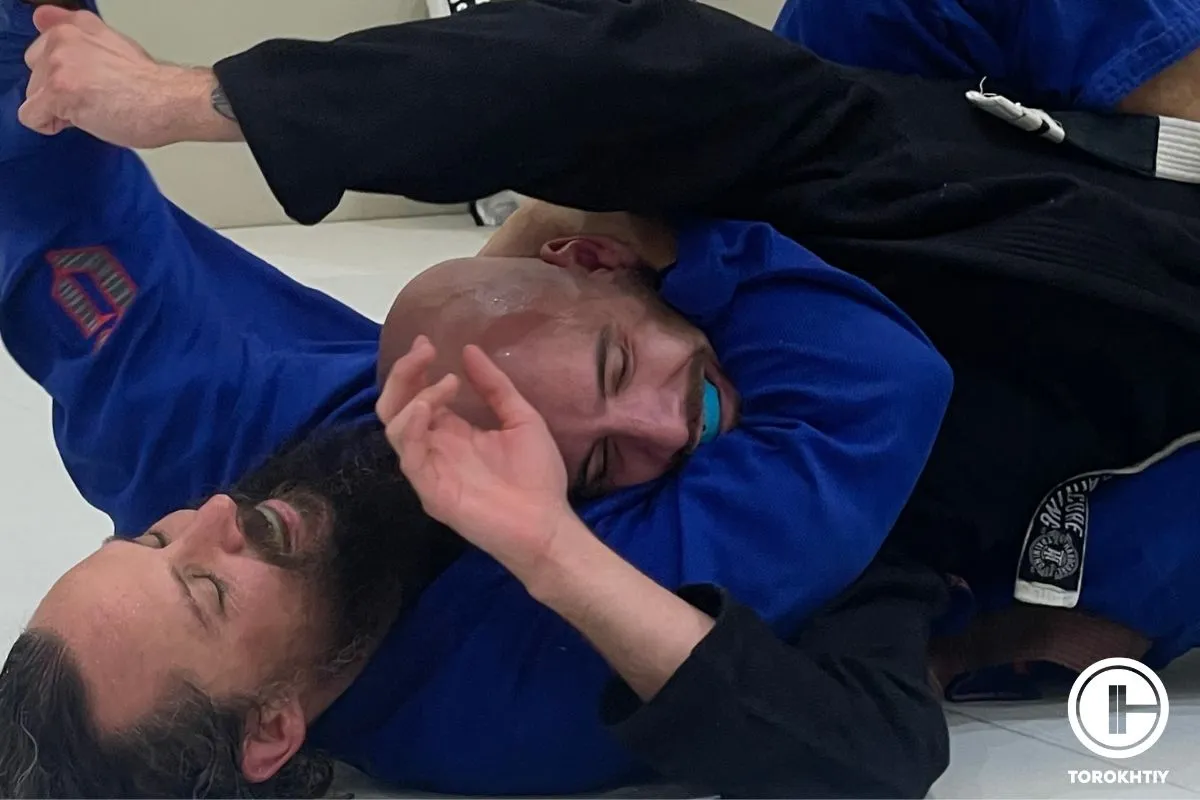
1. Wear Proper Clothing
Opt for appropriate BJJ clothing that covers your skin and minimizes friction. Rash guards, spats, knee pads, BJJ foot wrap, elbow pads, and Gis serve this purpose by shielding your skin from direct mat contact, reducing the risk of abrasions. Naftulin and McKeag (1994) have previously advised that protective equipment including clothing is most important in combat sports, as it prevents BJJ mat burn on face, knees, feet, and most common areas.
2. Train on Clean Mats
Choose mats crafted from smooth and durable materials that undergo frequent cleaning and disinfection for your training sessions. Extensive and intense training on rigid and dirty mats can result in mat burns. Thus, ensuring proper mat’s hygiene is one way to avoid BJJ mat burns.
3. Apply Moisturizer Before Training
Before BJJ training, apply moisturizer or petroleum jelly to your skin to maintain hydration and lubrication. It reduces potential friction and dryness, preventing the burns. However, be cautious about stepping on mats right after application, as it might leave visible stains based on mat color.
4. Avoid Certain Actions That May Cause BJJ Mat Burns
Certain actions can cause BJJ mat burns, such as extended sitting, repetitive muscle use without breaks, and overusing leg muscles. Whenever possible, distribute weight evenly through continuous movement to other body parts, minimizing excessive sliding or dragging on the mats. Lowering the intensity and duration of friction reduces the risk of mat burn.
5. Wear Protective Clothing and Pads
Protective equipment, such as rash guard, spats, knee pads, elbow pads, knee/elbow sleeves, headgear, and Gis, shields your skin from compression and friction during training. Although some practitioners feel it slows down the reaction time, making them vulnerable to submissions, these gears are crucial to prevent BJJ mat burn.
6. Protect Your Hand and Feet
Accurate taping and wrapping are extremely crucial to avert BJJ mat burn. An effective method to prevent mat burn is by employing functional bandages. Cloth tape is popular among professionals and amateurs alike to safeguard or provide support to injured areas. Place a band-aid on the affected area, then tape over it. Note that taping the wound directly can worsen tearing upon removal. Ensure to use proper BJJ tape, like quality athletic or KT tape.
Should I Train with a BJJ Mat Burn?
Whether or not to train with mat burn depends on its severity and your comfort level. Generally, you should avoid training if the BJJ mat burn meets one of the following:
- Painful or irritating
- Infected or inflamed
- Bleeding or oozing
- Large or has a deep wound
Training under these conditions can worsen the injury and increase the risk of burn infection, which may negatively affect your performance due to pain, bleeding, irritation, or discomfort. It’s advisable to pause training until it heals or, at the very least, cover it with protective clothing or a bandage.
How Long Does It Take for a BJJ Mat Burn to Heal?
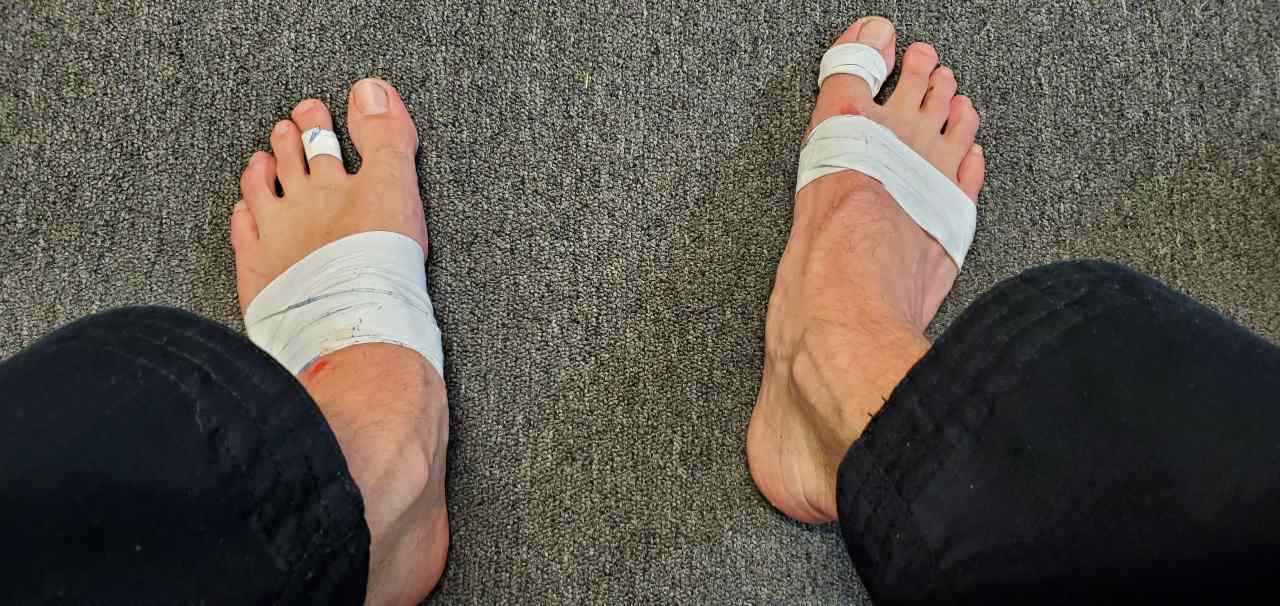
The duration for a BJJ mat burn to heal depends on the following factors:
- The wound’s severity and size
- The wound’s location and depth
- The wound’s cleanliness and care
- Your overall health and immune system
Typically, minor burns can heal in about a week without scarring if treated well. For more serious cases, healing can take longer, potentially weeks or even more if infection occurs.
Healing times vary:
- Mild burns: A few days to a week
- Moderate burns: One to two weeks
- Severe burns: Two to four weeks or more, doctor visits necessary
Commonly Addressed Issues
What Is the Best Ointment for BJJ Mat Burns?
Aloe vera gel, recognized for its cooling and natural anti-inflammatory traits, offers immediate relief from the burn. Its natural healing qualities diminish redness, swelling, and pain while maintaining skin moisture. Calendula ointment and tea tree oil are also worth considering for the burn given their antibacterial and antifungal properties.
Does Petroleum Jelly Help with BJJ Mat Burns?
Yes. Petroleum jelly, commonly known as a moisturizing agent, can offer relief for mat burn. Its smooth texture helps create a barrier over the affected area, particularly the face area, safeguarding it from external irritants and moisture. Petroleum jelly’s moisturizing properties also aid in preventing the dryness of the burns, which can accelerate the healing process.
Can I Still Train with a BJJ Mat Burn?
The response depends on your burn’s severity. For a mild burn that’s manageable, go ahead, but try to maintain consistent cleaning, and apply tape and bandages. However, if your mat burn is extensive and swollen, take a few days to rest and recover before resuming activity.
Summary
BJJ mat burns are commonly caused by friction between your skin and the mat and can be painful and prone to infection if untreated. To prevent infection, take care of your skin, use moisturizers and cleaned quality mats, and avoid excess sliding. Common treatment includes cooling, cleaning, and dressing the burns as well as using ointment for faster recovery.
Have you ever experienced a BJJ mat burn? Please, share your experience in the comments below.
References:
- Christian Wisdom Magtajas Valleser, “Common Injuries of Recreational Jiu Jitsu,” Journal of Physical Education Research 3, no. 4 (2016): 52-63.
- Christian Wisdom Magtajas Valleser, “Injuries in Novice Male Jiu Jitsu Practitioners,” Silliman Journal 57, no.1 (2022): 39-56.
- Ethan M. Kreiswirth, Gregory D. Myer, Mitchell J. Rauh, “Incidence of Injury Among Male Brazilian Jiu Jitsu Fighters at the World Jiu-Jitsu No-Gi Championship 2009,” Journal of Athletic Training 49, no. 1 (2014): 89-94, https://doi.org/10.4085/1062-6050-49.1.11.
- F. B. Del Vecchio, C. B. Farias, R. C. de Leon, A. C. C. A. Rocha, L. M. Galliano, V. S. Coswig, “Injuries in Martial Arts and Combat Sports: Prevalence, Characteristics and Mechanisms,” Science & Sports 33, no. 3 (2018): 158-163, https://doi.org/10.1016/j.scispo.2018.02.003.
- Maximilian Hinz, Benjamin D. Kleim, Daniel P. Berthold, Stephanie Geyer, Christophe Lambert, Andreas B. Imhoff, Julian Mehl, “Injury Patterns, Risk Factors, and Return to Sport in Brazilian Jiu Jitsu: A Cross-sectional Survey of 1140 Athletes,” Orthopaedic Journal of Sports Medicine 9, no. 12 (2021), doi: 10.1177/23259671211062568
- Ruikang Liu, Megan Lisset Jimenez, Christopher Joseph Haraszti, The Youth Athlete (Academic Press, 2023), 849-861, https://doi.org/10.1016/B978-0-323-99992-2.00072-4.
